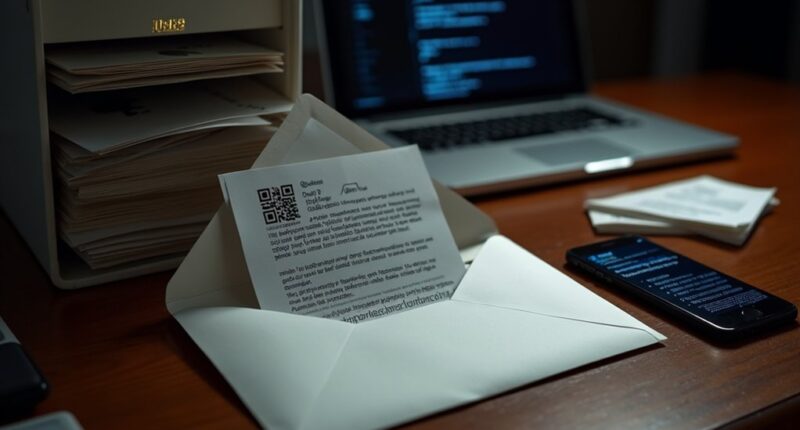While cybercriminals typically lurk in digital shadows, a bold new scam brings ransomware threats right to executives’ physical mailboxes. A fake group claiming to be the BianLian ransomware gang has been sending physical letters to C-suite executives. Pretty old school. These letters make bogus claims about data breaches and demand ransoms between $250,000 and $500,000. They even include a handy QR code for Bitcoin payment. How thoughtful of them.
This switch to physical mail is actually pretty clever. Email filters? Bypassed. Cybersecurity measures? Irrelevant. The letters marked “Time Sensitive Read Immediately” create artificial urgency while landing directly on executives’ desks. No technical knowledge required to understand the threat. Just pure, unfiltered fear. This approach represents an evolution in extortion tactics, moving beyond data exfiltration threats that have become standard in double extortion attacks.
Unlike traditional ransomware attacks, there’s no actual malware here. No encrypted systems. No real data breach. It’s just social engineering without the digital footprint. The whole operation banks on executives panicking before verifying if any breach actually occurred. Spoiler alert: it didn’t.
The potential impact on targeted organizations isn’t trivial. Executives might make hasty decisions that cost hundreds of thousands. Business operations get disrupted. Reputational damage looms. All because someone got a scary letter in the mail. Remember mail? That thing we used before Instagram? With 60% of businesses closing within months after a cyber attack, these threats can create genuine panic among leadership teams.
When panic meets postage, six-figure mistakes happen faster than you can say “return to sender.”
This tactic exposes a blind spot in modern security practices. Organizations obsess over digital defenses while neglecting old-fashioned mail screening. It’s like installing a high-tech security system but leaving your front door wide open. GuidePoint Security has reported that no known victims have paid these postal ransom demands so far.
The emergence of this hybrid attack method suggests where things might be heading. More personalized extortion attempts. AI-generated threats. Different physical delivery methods. Criminals are adapting, combining digital threats with analog delivery for maximum impact.
The lesson? Security isn’t just about sophisticated firewalls and intrusion detection. Sometimes it’s about checking what’s in the mailbox. Because apparently, that’s a thing again.









